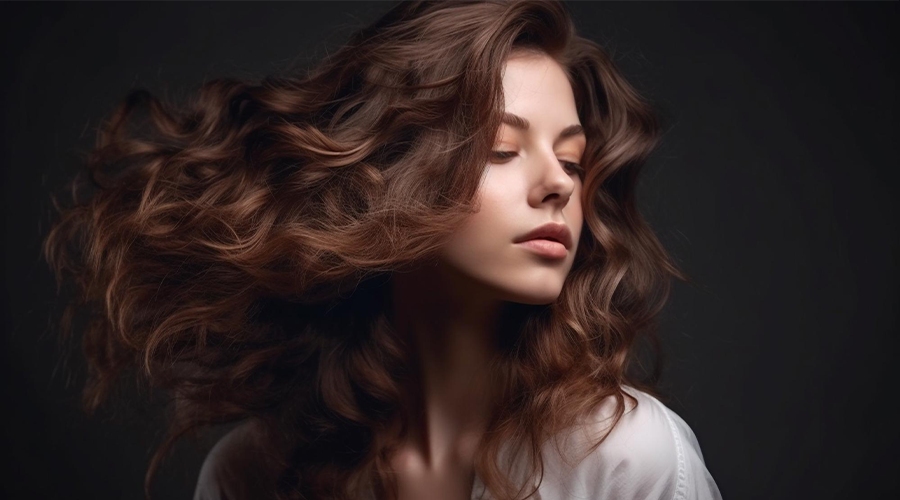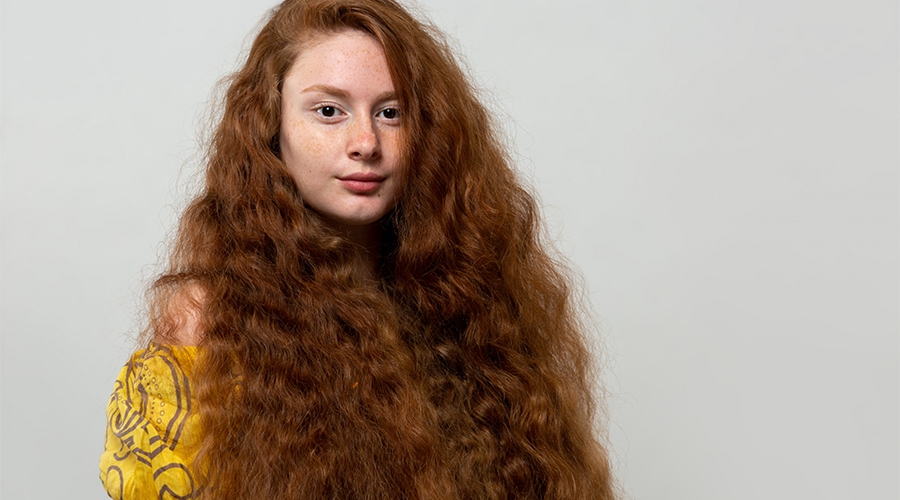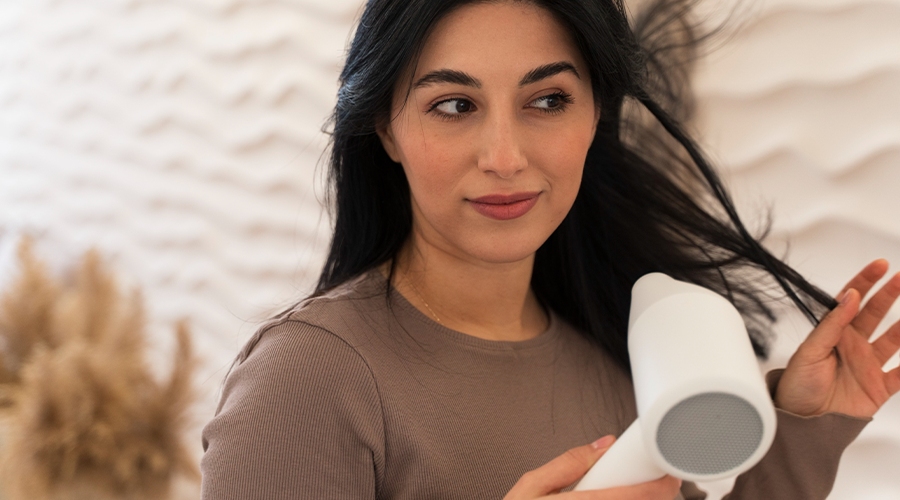Having healthy, lustrous hair is a goal many of us strive for, but it's essential to tailor your haircare routine to your specific hair type. Different hair types have varying needs and require unique care to look and feel their best. In this comprehensive guide, we'll explore the best haircare routines for various hair types, including straight, curly, wavy, and textured hair. By following these expert tips, you can achieve and maintain gorgeous locks that reflect your hair's natural beauty.
Straight Hair:

Straight hair tends to be smooth and sleek but can become flat and lack volume over time. The key is to maintain shine, prevent oil buildup, and add body when needed.
1. Shampoo and Conditioner:
- Use a lightweight, sulfate-free shampoo to avoid stripping natural oils.
- Condition from mid-length to ends to prevent over-conditioning the roots.
- Consider a volumizing conditioner to add body.
2. Hair Washing Frequency:
- Straight hair can handle less frequent washing, so aim for every 2-3 days.
3. Styling Products:
- Use lightweight styling products like mousse or volumizing spray to add lift and texture.
- Avoid heavy, oil-based products that can weigh down your hair.
4. Heat Styling:
- Use a heat protectant spray before using hot tools.
- Limit heat styling to minimize damage.
Curly Hair:

Curly hair tends to be drier and more prone to frizz. The goal is to hydrate, define curls, and reduce frizz.
1. Shampoo and Conditioner:
- Use a hydrating, sulfate-free shampoo to retain moisture.
- Apply conditioner generously, and consider a leave-in conditioner for added moisture.
2. Hair Washing Frequency:
- Curly hair benefits from less frequent washing, ideally once a week or as needed.
3. Styling Products:
- Use a curl-enhancing cream or gel to define curls.
- Consider anti-frizz products to combat humidity.
4. Drying:
- Air-dry your hair or use a diffuser attachment on a low heat setting to avoid disrupting curls.
Wavy Hair:

Wavy hair falls between straight and curly, often requiring products that balance moisture and enhance natural waves.
1. Shampoo and Conditioner:
- Use a mild, hydrating shampoo to maintain natural waves.
- Condition to prevent dryness and frizz, focusing on mid-length to ends.
2. Hair Washing Frequency:
- Wavy hair can typically be washed every 2-3 days.
3. Styling Products:
- Opt for lightweight styling products that enhance waves without weighing them down.
4. Texture Enhancement:
- Scrunch your hair while applying styling products to accentuate waves.
Textured Hair (Kinky, Coily):

Textured hair comes in various forms, from kinky to coily, and requires moisture, protection, and specialized products to maintain its health and definition.
1. Shampoo and Conditioner:
- Use a sulfate-free, moisturizing shampoo.
- Deep condition regularly to restore moisture and maintain elasticity.
2. Hair Washing Frequency:
- Coily and kinky hair can be washed weekly or bi-weekly.
3. Styling Products:
- Use leave-in conditioners, hair oils, and curl-defining creams to hydrate and define curls.
4. Protective Styling:
- Consider protective styles like braids or twists to minimize manipulation and prevent breakage.
5. Gentle Handling:
- Handle textured hair with care to avoid damage, and use a wide-tooth comb or fingers for detangling.
Common Tips for All Hair Types:

- Regular Trims: Trim your hair every 6-8 weeks to prevent split ends and maintain healthy hair.
- Avoid Overuse of Heat: Minimize heat styling to prevent damage. Air-dry whenever possible.
- Protect Your Hair from the Sun: Use UV protection products or wear a hat when exposed to the sun.
- Balanced Diet: A balanced diet rich in vitamins, minerals, and protein supports healthy hair growth.
- Stay Hydrated: Drink plenty of water to keep your hair and scalp hydrated.
- Avoid Overloading Products: Use products sparingly to prevent buildup, which can weigh down your hair.
- Consult a Professional: If you have specific hair concerns, consult a hairstylist or dermatologist for personalized advice.
Common Haircare Concerns and Solutions:
Dry Hair:
Concern: Dry hair lacks moisture and can appear dull and brittle.
Solution: Use hydrating shampoos and conditioners designed for your hair type. Incorporate a deep conditioning treatment once a week to replenish moisture. Avoid excessive heat styling, as it can further dehydrate your hair. Consider using a silk or satin pillowcase to prevent moisture loss and breakage.
Oily Scalp:
Concern: Excess oil on the scalp can make hair look greasy and require frequent washing.
- Solution: Use a clarifying shampoo occasionally to remove excess oil and buildup. Avoid over-washing, as it can stimulate more oil production. Consider using a dry shampoo between washes to absorb excess oil. Use lightweight, oil-free styling products to avoid adding more oil to your hair.
Dandruff:
- Concern: Dandruff can be caused by dryness, oil buildup, or fungal overgrowth, leading to an itchy, flaky scalp.
- Solution: Use an anti-dandruff shampoo containing ingredients like pyrithione zinc, ketoconazole, or selenium sulfide. Massage it into your scalp and leave it on for a few minutes before rinsing. Avoid hot water when washing your hair, as it can exacerbate dryness. If dandruff persists, consult a dermatologist for treatment options.
Hair Loss:
- Concern: Hair loss can occur due to various factors, including genetics, hormonal changes, and lifestyle.
- Solution: Maintain a healthy lifestyle with a balanced diet, regular exercise, and stress management to support overall hair health. Use gentle haircare products to prevent breakage, and avoid tight hairstyles that pull on your hair. If hair loss is a significant concern, consult a healthcare professional for a thorough evaluation and potential treatment options.
Color-Treated Hair:
- Concern: Color-treated hair requires extra care to maintain color vibrancy and prevent damage.
- Solution: Use sulfate-free shampoos and conditioners designed for color-treated hair to minimize color fading. Consider using a color-protecting hair mask or conditioner regularly. Limit heat styling and use heat protectant products when necessary. Avoid prolonged sun exposure, as it can cause color fading.
Thinning Hair:
- Concern: Thinning hair can be caused by factors like aging, genetics, or health conditions.
- Solution: Use volumizing products and consider hairstyles that add dimension and volume to your hair. Consult a hairstylist for a suitable haircut that makes your hair appear thicker. Scalp massages can help stimulate blood flow to the hair follicles. For severe thinning, consult a dermatologist or trichologist for professional guidance.
Frizz:
- Concern: Frizz occurs when hair is dry and lacks moisture.
- Solution: Use smoothing and anti-frizz products, such as serums or leave-in conditioners, to tame frizz. Avoid over-brushing your hair, as it can disrupt the natural curl pattern and lead to frizz. Consider using a microfiber towel or an old t-shirt to blot your hair gently instead of rubbing it vigorously.
In conclusion, achieving and maintaining healthy, beautiful hair involves understanding your hair type, addressing common concerns, and dispelling myths about haircare. With the right haircare routine tailored to your specific needs and regular maintenance, you can enjoy hair that looks and feels its best. Remember that consistency and patience are key to achieving and maintaining your desired hair goals.










